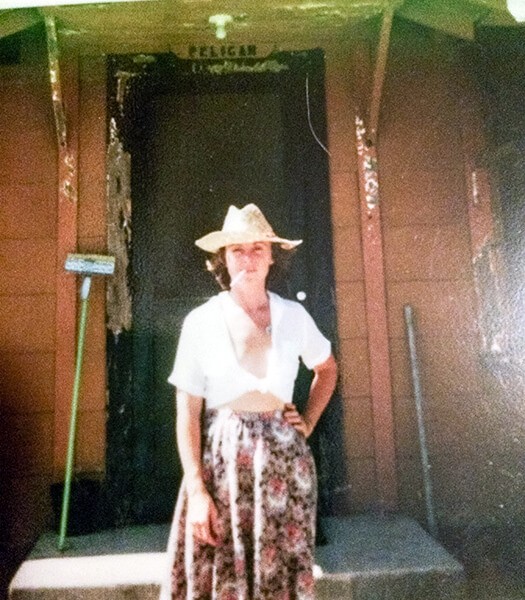Are you curious about the significance of pagodas and temples in contemporary society? Beyond their stunning architecture and serene atmospheres, these sacred spaces hold a vital role in community life. At SIXT.VN, we understand the importance of exploring cultural heritage and providing seamless travel experiences. Let’s delve into the multifaceted influence of these landmarks, offering insights and tips for your next cultural journey in Vietnam and beyond. Discover the cultural richness and spiritual comfort these places provide, and let SIXT.VN be your guide to unforgettable cultural tourism.
1. What is the Historical Significance of Pagodas and Temples?
Pagodas and temples have been central to community life for centuries, serving as more than just places of worship. They’ve been centers for social gathering, education, and cultural preservation.
- Religious Importance: Historically, pagodas and temples have been the epicenters of religious practices. They provide a space for devotees to connect with their faith, participate in rituals, and seek spiritual guidance. The architecture and art within these structures often depict religious stories and teachings, further enhancing their spiritual significance.
- Cultural Hubs: Beyond religion, these sites have served as vital cultural hubs. They often host festivals, ceremonies, and community events that celebrate local traditions and customs. This role has helped to preserve cultural heritage and pass it down through generations.
- Educational Centers: In many societies, temples and pagodas historically served as educational centers. Monks and religious scholars would teach various subjects, including literature, philosophy, and medicine. This made these sites important centers of knowledge and learning for the broader community.
- Community Gathering Places: Pagodas and temples have always been places where people come together. They provide a neutral and peaceful setting for social interaction, discussions, and community decision-making. This sense of community fosters social cohesion and mutual support.
Exploring these historical facets offers a deeper appreciation for the role pagodas and temples play in shaping communities. Understanding their past helps us recognize their continued relevance in modern society.
 Emily Greene sits on the sand with the ocean behind her
Emily Greene sits on the sand with the ocean behind her
2. How Do Pagodas and Temples Serve as Spiritual Centers Today?
In today’s fast-paced world, pagodas and temples continue to offer essential spiritual solace and guidance. Their significance as spiritual centers remains unwavering, providing a sanctuary for those seeking inner peace and enlightenment.
- Places of Worship and Meditation: Pagodas and temples remain primary locations for religious worship, spiritual practice, and meditation. Individuals and groups gather to pray, chant, and meditate, seeking connection with the divine and inner tranquility. According to research from the Pew Research Center in 2021, these practices are integral to maintaining mental and emotional well-being.
- Centers for Spiritual Learning: Many temples and pagodas offer classes, lectures, and workshops on religious teachings and spiritual development. These educational programs provide individuals with the tools and knowledge to deepen their understanding of their faith and improve their spiritual lives. Spiritual leaders and scholars guide followers, reinforcing the temple’s role as a learning institution.
- Guidance and Counseling: Monks, priests, and other religious figures provide guidance and counseling to community members, offering support during personal struggles and life transitions. This counseling is often rooted in religious and philosophical principles, providing a unique perspective and comfort. This form of pastoral care strengthens community bonds and offers personalized assistance.
- Preservation of Religious Traditions: Pagodas and temples ensure the continuation of religious traditions, preserving rituals, ceremonies, and practices that have been passed down through generations. These traditions often carry deep cultural significance, reinforcing identity and belonging within the community. This preservation is vital for maintaining cultural heritage.
- Moral and Ethical Anchors: These sacred places often serve as moral and ethical anchors, promoting values such as compassion, generosity, and mindfulness. By adhering to these principles, communities foster a sense of collective responsibility and promote social harmony. The consistent emphasis on ethical behavior helps shape personal conduct and community standards.
By offering spiritual support, education, and moral guidance, pagodas and temples continue to be indispensable spiritual centers, helping individuals navigate the complexities of modern life while staying grounded in their faith.
3. What is the Role of Pagodas and Temples in Cultural Preservation?
Pagodas and temples play a critical role in preserving cultural heritage by safeguarding traditions, arts, and historical knowledge. They are not just religious sites but also living museums that keep cultural identity alive.
- Architectural Preservation: Many pagodas and temples are architectural marvels, showcasing unique designs and building techniques specific to their region and era. Preserving these structures is crucial for understanding historical construction methods and aesthetic values. Restoration projects often involve traditional artisans, ensuring that ancient skills are maintained and passed on.
- Artistic Repositories: These sites house a wealth of artistic treasures, including sculptures, paintings, and intricate carvings. These artworks often depict religious figures, mythological stories, and historical events, providing valuable insights into cultural beliefs and practices. Conservation efforts protect these artifacts from decay, ensuring they remain accessible for future generations.
- Custodians of Historical Records: Pagodas and temples frequently maintain historical records, such as ancient texts, manuscripts, and inscriptions. These documents contain valuable information about local history, religious doctrines, and cultural practices. Digitalization projects are underway in many places to make these records more accessible to researchers and the public.
- Centers for Traditional Arts and Crafts: Many temples host workshops and classes that teach traditional arts and crafts, such as calligraphy, painting, and sculpture. These programs help preserve traditional skills and provide artisans with opportunities to showcase their talents. Festivals and fairs often feature these crafts, promoting them to a wider audience.
- Guardians of Rituals and Ceremonies: Pagodas and temples are the primary venues for religious rituals and ceremonies, which are often steeped in cultural traditions. These events reinforce cultural identity and provide opportunities for community members to participate in and learn about their heritage. Documenting and promoting these practices ensures they continue to be relevant in modern times.
By actively preserving architecture, art, historical records, and traditional practices, pagodas and temples ensure that cultural heritage remains vibrant and accessible, connecting past and present generations.
 Rainbow Williams profile with hat and a straw between her teeth
Rainbow Williams profile with hat and a straw between her teeth
4. How Do Pagodas and Temples Contribute to Community Development?
Pagodas and temples often serve as hubs for various community development initiatives, fostering social cohesion, providing welfare services, and promoting education. Their impact extends far beyond the religious sphere.
- Centers for Social Welfare: Many pagodas and temples operate charitable programs to support vulnerable community members. These initiatives include providing food, shelter, and medical assistance to those in need. Donations from devotees and the community at large fund these activities, creating a safety net for the less fortunate.
- Educational Initiatives: Temples and pagodas frequently offer educational programs for children and adults, such as language classes, vocational training, and literacy programs. These initiatives help improve educational outcomes and provide skills for employment. Scholarships and grants may also be available to support students from low-income families.
- Community Health Programs: Some temples and pagodas run health clinics and wellness programs, offering medical services, health education, and traditional medicine practices. These initiatives help improve community health and well-being, particularly in areas with limited access to healthcare. Preventative care and health screenings are often part of these programs.
- Conflict Resolution and Mediation: Temples and pagodas often serve as neutral grounds for conflict resolution and mediation, helping to resolve disputes within the community. Religious leaders and respected elders facilitate discussions and promote reconciliation. This role helps maintain social harmony and prevent conflicts from escalating.
- Environmental Conservation: Many temples and pagodas are actively involved in environmental conservation efforts, promoting sustainable practices and raising awareness about environmental issues. These initiatives include tree planting, waste reduction, and promoting eco-friendly lifestyles. The sacred status of these sites often encourages respect for nature.
- Community Building Events: Temples and pagodas frequently host community events, such as festivals, fairs, and cultural performances. These events bring people together, fostering social interaction and strengthening community bonds. They also provide opportunities for local businesses and artisans to showcase their products and talents.
Through these multifaceted community development efforts, pagodas and temples play a vital role in enhancing the quality of life, promoting social well-being, and fostering a strong sense of community.
5. What is the Impact of Pagodas and Temples on Tourism and the Economy?
Pagodas and temples significantly boost tourism and local economies by attracting visitors, generating revenue, and supporting local businesses. Their cultural and historical appeal makes them key destinations for travelers.
- Attracting Tourists: Many pagodas and temples are major tourist attractions, drawing visitors from around the world. Their unique architecture, historical significance, and spiritual ambiance make them must-see destinations. Popular sites often feature prominently in travel guides and promotional materials.
- Generating Revenue: Tourism to these sites generates significant revenue for local economies. Visitors spend money on accommodation, food, transportation, and souvenirs, supporting local businesses. Entrance fees and donations also contribute to the upkeep and preservation of these sites.
- Supporting Local Businesses: The presence of tourists creates opportunities for local businesses, such as restaurants, hotels, and souvenir shops. These businesses cater to the needs of visitors, providing employment and income for local residents. Handicraft vendors and artisans also benefit from tourist purchases.
- Promoting Cultural Exchange: Tourism fosters cultural exchange between visitors and local communities. Tourists learn about local traditions, customs, and beliefs, while locals have the opportunity to interact with people from different cultures. This exchange promotes understanding and appreciation of cultural diversity.
- Infrastructure Development: Increased tourism often leads to infrastructure development around pagodas and temples, such as improved roads, transportation facilities, and visitor amenities. These improvements benefit both tourists and local residents, enhancing the overall quality of life.
- Preservation Incentives: The economic benefits of tourism provide incentives for preserving and maintaining pagodas and temples. Local authorities and communities are more likely to invest in conservation efforts when they recognize the economic value of these sites. This helps ensure that these cultural treasures are protected for future generations.
- Sustainable Tourism Practices: Responsible tourism practices help minimize negative impacts on the environment and local communities. Sustainable tourism focuses on preserving cultural heritage, supporting local businesses, and promoting ethical travel. These practices ensure that tourism benefits both visitors and host communities in the long term.
By attracting tourists, generating revenue, and supporting local businesses, pagodas and temples play a crucial role in stimulating economic growth and promoting sustainable development.
 Rena Carney wears a straw hat and stands in front of her cottage door with hand on hip
Rena Carney wears a straw hat and stands in front of her cottage door with hand on hip
6. What Are Some Examples of Famous Pagodas and Temples Around the World?
Across the globe, numerous pagodas and temples stand as iconic landmarks, each with its own unique history, architecture, and cultural significance. Here are some notable examples:
| Pagoda/Temple | Location | Significance |
|---|---|---|
| Angkor Wat | Cambodia | A massive stone temple complex dedicated to the Hindu god Vishnu, renowned for its intricate carvings and stunning architecture. |
| Borobudur | Indonesia | A 9th-century Mahayana Buddhist temple, famous for its stepped pyramid structure and numerous relief panels depicting Buddhist teachings. |
| Senso-ji | Tokyo, Japan | Tokyo’s oldest temple, attracting millions of visitors each year with its vibrant markets, traditional architecture, and spiritual significance. |
| Shwedagon Pagoda | Yangon, Myanmar | A gilded stupa that is the most sacred Buddhist pagoda in Myanmar, believed to contain relics of several past Buddhas. |
| Temple of Heaven | Beijing, China | A complex of sacrificial buildings dating back to the Ming Dynasty, symbolizing the connection between heaven and earth. |
| Lotus Temple | Delhi, India | A Baháʼí House of Worship, notable for its flower-like shape, symbolizing purity and openness to all religions. |
| Wat Arun | Bangkok, Thailand | Known as the Temple of Dawn, this iconic temple is famous for its intricate decorations and stunning riverside location. |
| Hsing Yun Temple | Orlando, USA | A Zen Buddhist Temple, with a beautiful landscape to find inner peace |
| Jetavanaramaya | Anuradhapura, Sri Lanka | A stupa located in the ancient city of Anuradhapura, Sri Lanka. It was built in the 3rd century AD by King Jettathissa I and is one of the tallest ancient structures in the world. |
| Kek Lok Si Temple | Penang, Malaysia | A Zen Buddhist Temple, with a beautiful landscape to find inner peace |
Each of these sites offers a unique glimpse into the cultural and religious traditions of its host country, making them essential destinations for travelers seeking to explore the world’s rich heritage.
7. What Challenges Do Pagodas and Temples Face Today?
Despite their enduring importance, pagodas and temples face numerous challenges today, ranging from environmental threats to social and economic pressures. Addressing these issues is crucial for preserving these cultural treasures for future generations.
- Environmental Degradation: Pollution, climate change, and natural disasters pose significant threats to the structural integrity and artistic treasures of pagodas and temples. Acid rain, erosion, and rising sea levels can damage ancient buildings and artifacts. Conservation efforts must address these environmental challenges to protect these sites.
- Over-Tourism: While tourism brings economic benefits, over-tourism can lead to overcrowding, damage to historical sites, and disruption of local communities. Balancing the needs of tourists with the preservation of cultural heritage is essential. Sustainable tourism practices, such as limiting visitor numbers and promoting responsible behavior, can help mitigate these impacts.
- Lack of Funding: Many pagodas and temples struggle to secure sufficient funding for maintenance, restoration, and community programs. Government grants, private donations, and fundraising initiatives are crucial for supporting these activities. Innovative funding models, such as crowdfunding and corporate sponsorships, can also help address financial challenges.
- Social and Political Changes: Social and political changes can impact the role and relevance of pagodas and temples in modern society. Secularization, changing demographics, and political instability can affect attendance, donations, and community support. Adapting to these changes while preserving core values and traditions is essential for ensuring the continued relevance of these sites.
- Cultural Misunderstanding: Lack of awareness and understanding of cultural traditions can lead to disrespectful behavior by visitors and the misrepresentation of religious practices. Educational programs, guided tours, and cultural exchange initiatives can help promote understanding and appreciation of cultural diversity. Clear guidelines and visitor etiquette can also help minimize cultural misunderstandings.
- Theft and Vandalism: Pagodas and temples are vulnerable to theft and vandalism, with valuable artifacts and religious items being targeted. Security measures, such as surveillance systems, alarm systems, and increased patrols, can help protect these sites. Community involvement and awareness campaigns can also help prevent these incidents.
- Urban Development: Encroaching urbanization poses a threat to the serenity and historical integrity of pagodas and temples. The construction of modern buildings and infrastructure can disrupt the spiritual ambiance and obscure historical views. Urban planning policies that protect cultural heritage and promote sustainable development are crucial for minimizing these impacts.
By addressing these challenges through collaborative efforts, innovative solutions, and sustainable practices, we can ensure that pagodas and temples continue to thrive as vital centers of community life for generations to come.
8. How Can You Respectfully Visit Pagodas and Temples?
Visiting pagodas and temples requires an understanding of local customs and a respectful approach to ensure a meaningful and appropriate experience. Here are some guidelines to follow:
- Dress Code: Wear modest clothing that covers your shoulders and knees. Avoid wearing revealing or overly casual attire. Some temples may provide robes or wraps for visitors who are not appropriately dressed.
- Remove Shoes: Before entering the main worship area, remove your shoes. This is a sign of respect for the sacred space. You may also need to remove your hat or head covering in some temples.
- Quiet and Reverence: Maintain a quiet and respectful demeanor inside the temple. Avoid talking loudly, laughing, or engaging in disruptive behavior. Silence your mobile phone and refrain from using it unless necessary.
- Photography: Check if photography is allowed before taking pictures. Some temples may prohibit photography altogether, while others may restrict flash photography. Always be mindful of your surroundings and avoid disrupting worshippers.
- Offerings and Donations: You may wish to make an offering or donation to the temple. This is a common practice and a way to show your support. Small monetary donations, flowers, or incense are often accepted.
- Respect Religious Icons: Show reverence for religious icons, such as statues of Buddha or other deities. Avoid pointing, touching, or climbing on these objects. Bow your head or offer a prayer as a sign of respect.
- Ask Permission: If you have questions about the temple or its practices, ask a temple official or guide. They can provide valuable insights and help you better understand the cultural significance of the site.
- Follow Local Customs: Be aware of local customs and traditions. Observe how local worshippers behave and follow their example. If you are unsure about something, it is always best to err on the side of caution and show respect.
- Avoid Touching Others: In some cultures, physical contact between men and women is discouraged in religious settings. Be mindful of this custom and avoid touching others, especially monks or nuns.
- Be Mindful of Monks and Nuns: Show respect for monks and nuns. Offer them your seat, avoid standing too close, and refrain from engaging in casual conversation. If you wish to speak with them, do so respectfully and with humility.
By following these guidelines, you can ensure that your visit to a pagoda or temple is respectful, meaningful, and enriching.
 A typed newsletter first page with the first heading POLICY UPDATE
A typed newsletter first page with the first heading POLICY UPDATE
9. What Are Some Common Misconceptions About Pagodas and Temples?
Numerous misconceptions surround pagodas and temples, often stemming from a lack of cultural understanding. Clarifying these misconceptions can foster greater respect and appreciation for these sacred spaces.
- All Pagodas and Temples Are the Same: One common misconception is that all pagodas and temples are the same. In reality, they vary widely in terms of architecture, religious affiliation, and cultural significance. Different traditions, such as Buddhism, Hinduism, and Taoism, have their own unique styles and practices.
- They Are Only Places for the Elderly: Another misconception is that pagodas and temples are only for the elderly. While older generations often play a vital role in maintaining these sites, people of all ages visit for worship, meditation, and community events. Many temples also offer programs specifically designed for children and young adults.
- Visitors Must Be Religious to Enter: Some people believe that you must be religious to enter a pagoda or temple. In most cases, visitors of all faiths (or no faith) are welcome to explore these sites, as long as they do so respectfully. However, it is important to be mindful of religious practices and avoid disrupting worshippers.
- Donations Are Mandatory: Another misconception is that donations are mandatory when visiting a pagoda or temple. While donations are always appreciated and help support the upkeep of these sites, they are not required. Visitors are free to explore the temple without making a donation.
- Photography Is Always Allowed: Some visitors assume that photography is always allowed inside pagodas and temples. In reality, many temples restrict photography, especially in the main worship areas. Always check with temple officials or guides before taking pictures.
- They Are Primarily Tourist Attractions: While many pagodas and temples are popular tourist attractions, their primary purpose is religious and spiritual. They serve as centers of worship, meditation, and community life. It is important to remember this and treat these sites with respect.
- Modernization Is Harmful: Some people believe that modernization is harmful to pagodas and temples. While it is important to preserve traditional architecture and practices, modernization can also enhance the functionality and accessibility of these sites. Improvements such as better lighting, climate control, and visitor amenities can make temples more comfortable and welcoming.
By dispelling these common misconceptions, we can foster a deeper understanding and appreciation for the rich cultural and spiritual significance of pagodas and temples.
10. How is SIXT.VN Enhancing Cultural Tourism Experiences?
SIXT.VN is dedicated to enhancing cultural tourism experiences by providing seamless, convenient, and reliable services tailored to the needs of travelers exploring Vietnam’s rich heritage. Our services ensure that your journey is as enriching and stress-free as possible.
- Customized Travel Itineraries: We offer customized travel itineraries that cater to your specific interests, whether you’re interested in exploring ancient temples, historical sites, or vibrant local markets. Our expert travel consultants can help you plan the perfect itinerary, ensuring that you experience the best of Vietnam’s culture and heritage.
- Airport Transfer Services: SIXT.VN provides reliable airport transfer services to ensure a smooth and hassle-free arrival and departure. Our professional drivers will greet you at the airport and transport you to your hotel or other destination in comfort and safety. This service eliminates the stress of navigating public transportation or finding a taxi.
- Hotel Booking Services: We offer a wide range of hotel options to suit every budget and preference, from luxury resorts to boutique hotels. Our user-friendly booking platform makes it easy to find and book the perfect accommodation for your cultural tourism adventure. We ensure that you stay in comfortable and convenient locations near the cultural sites you want to visit.
- Sightseeing Tours: SIXT.VN organizes guided sightseeing tours to popular cultural attractions, providing you with expert insights and local knowledge. Our knowledgeable guides will take you to the most iconic landmarks and hidden gems, offering a deeper understanding of Vietnam’s history and culture.
- Flight Booking Services: We provide convenient flight booking services to help you find the best deals on flights to Vietnam. Our platform allows you to compare prices from multiple airlines and book your flights with ease. We ensure that you have a seamless travel experience from the moment you book your flights.
- Multilingual Support: Our multilingual support team is available to assist you with any questions or concerns you may have. We offer support in multiple languages, including English, French, and Vietnamese, ensuring that you can communicate with us easily and effectively.
- Car Rental Services: SIXT.VN offers car rental services, giving you the freedom and flexibility to explore Vietnam at your own pace. Choose from a wide range of vehicles to suit your needs and preferences, from compact cars to spacious SUVs. Our car rental services provide you with the independence to discover hidden gems and off-the-beaten-path destinations.
By providing these comprehensive services, SIXT.VN enhances your cultural tourism experience in Vietnam, making it more enjoyable, convenient, and memorable. Let us take care of the details so you can focus on immersing yourself in the rich culture and heritage of Vietnam.
Ready to explore the spiritual and cultural heart of Vietnam? Let SIXT.VN guide you through its mesmerizing pagodas and temples with ease. Contact us today to plan your unforgettable cultural journey! Visit our website or call +84 986 244 358 for personalized assistance. Address: 260 Cau Giay, Hanoi, Vietnam.
 Morgana MacVicar dressed in a black two piece costume dances on stage in front of a decorated altar
Morgana MacVicar dressed in a black two piece costume dances on stage in front of a decorated altar
FAQs About the Role of Pagodas and Temples in Community Life
- What is the primary function of a pagoda or temple?
- Pagodas and temples primarily serve as places of worship, meditation, and spiritual practice for various religious traditions.
- How do pagodas and temples contribute to cultural preservation?
- They preserve architectural styles, artistic treasures, historical records, and traditional rituals, ensuring cultural heritage is passed down through generations.
- What role do pagodas and temples play in community development?
- They serve as centers for social welfare, education, health programs, conflict resolution, and environmental conservation, enhancing community well-being.
- How do pagodas and temples impact tourism and the economy?
- They attract tourists, generate revenue, support local businesses, promote cultural exchange, and incentivize preservation efforts.
- What are some famous pagodas and temples around the world?
- Examples include Angkor Wat in Cambodia, Borobudur in Indonesia, and Senso-ji in Tokyo, each with unique historical and cultural significance.
- What challenges do pagodas and temples face today?
- They face environmental degradation, over-tourism, lack of funding, social and political changes, and cultural misunderstandings.
- How can visitors respectfully visit pagodas and temples?
- By adhering to dress codes, maintaining quiet reverence, respecting religious icons, and following local customs.
- What are some common misconceptions about pagodas and temples?
- Misconceptions include thinking all pagodas and temples are the same, they are only for the elderly, and visitors must be religious to enter.
- How can sustainable tourism practices help preserve pagodas and temples?
- Sustainable tourism minimizes negative impacts, promotes responsible behavior, supports local businesses, and preserves cultural heritage.
- How is SIXT.VN enhancing cultural tourism experiences related to pagodas and temples?
- SIXT.VN offers customized itineraries, airport transfers, hotel booking, sightseeing tours, and multilingual support to ensure a seamless and enriching travel experience.



